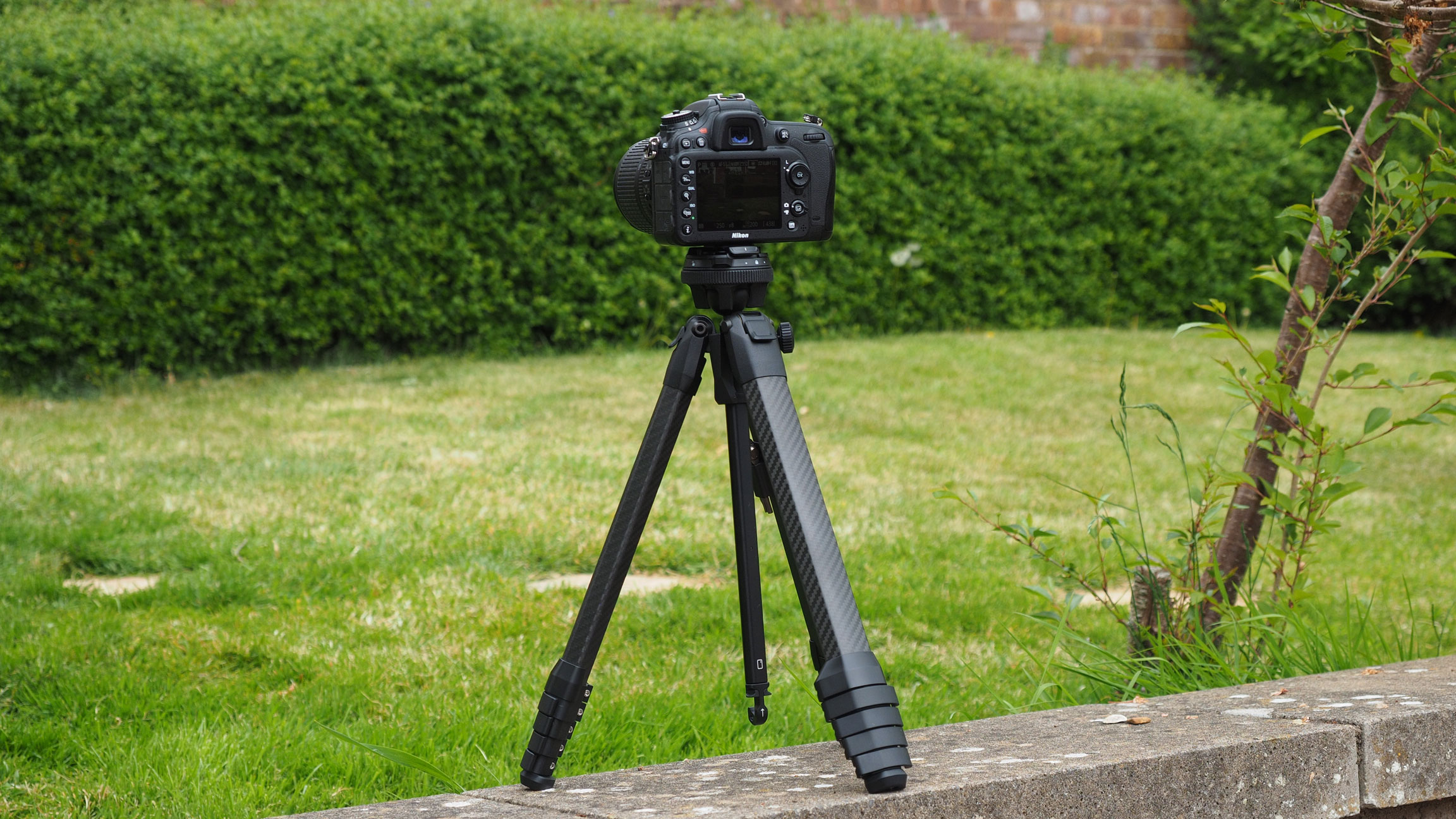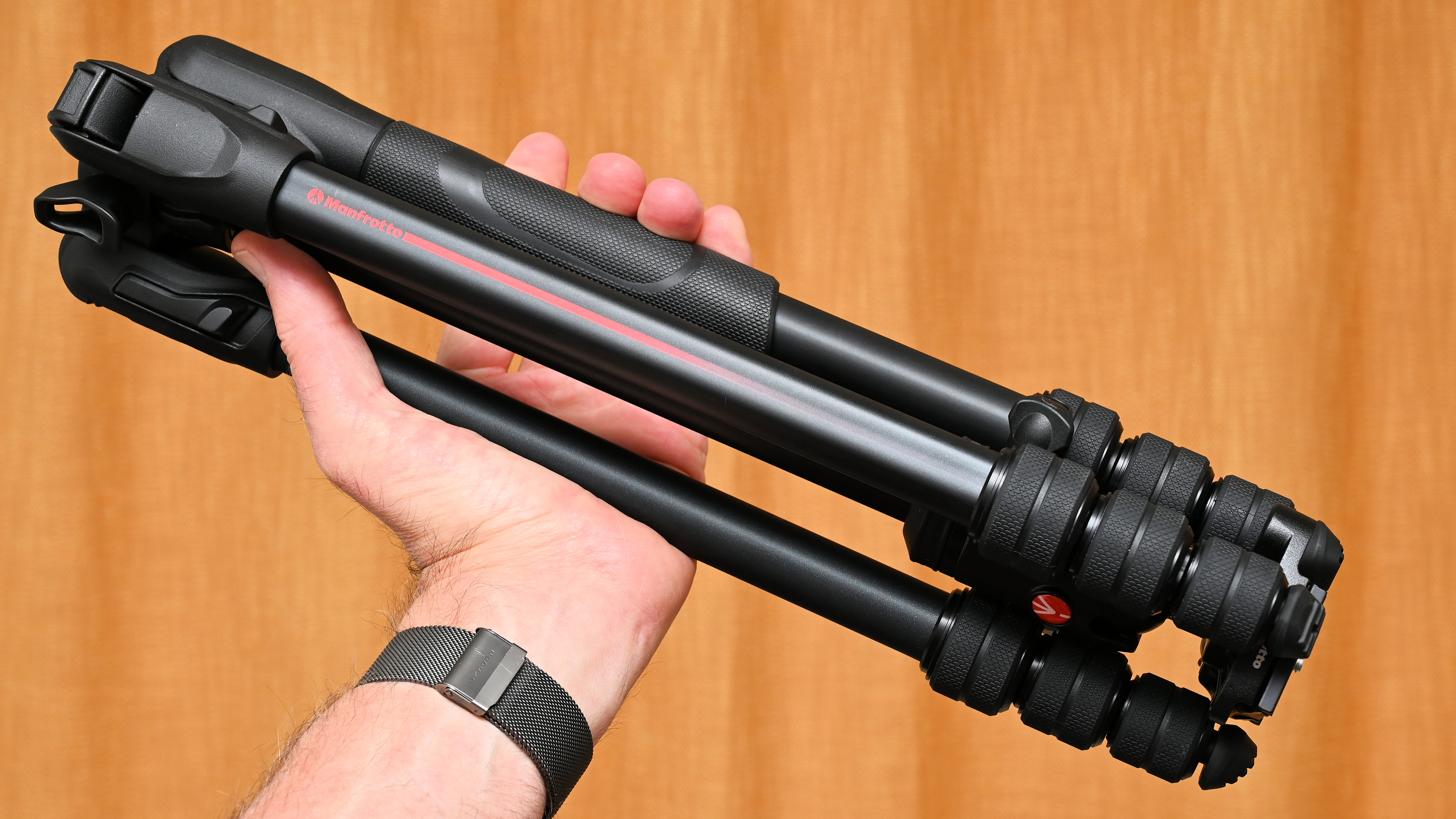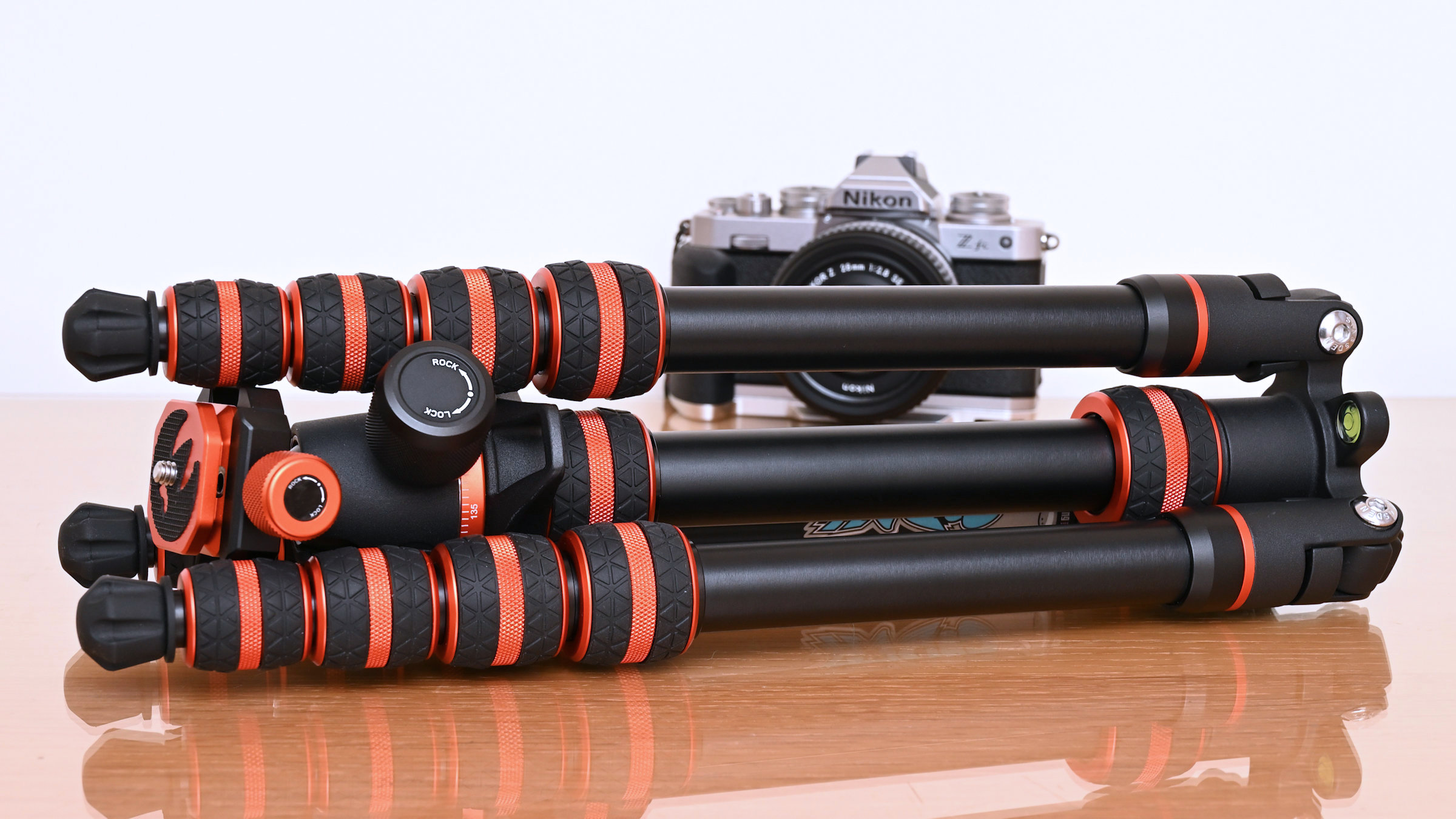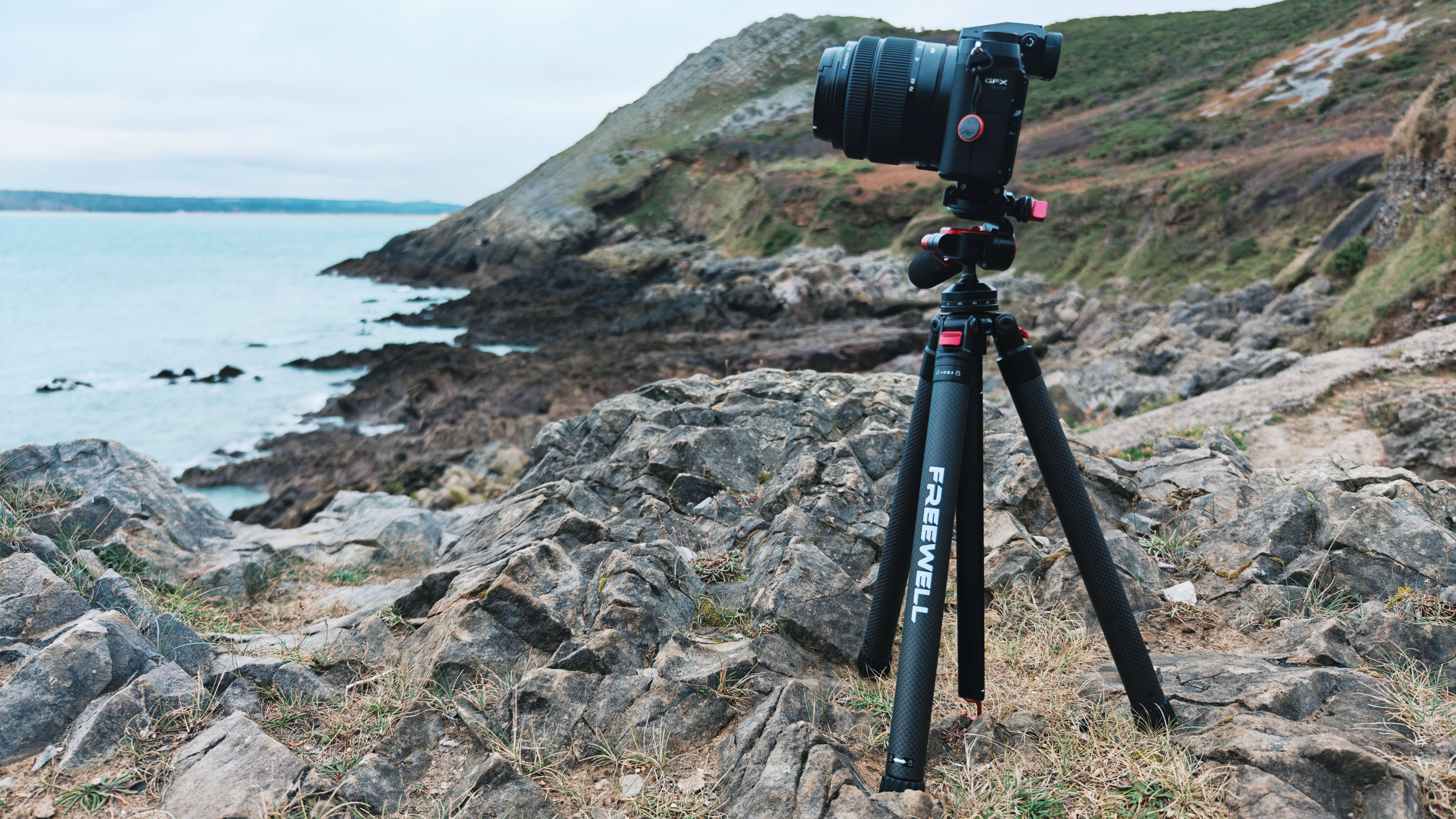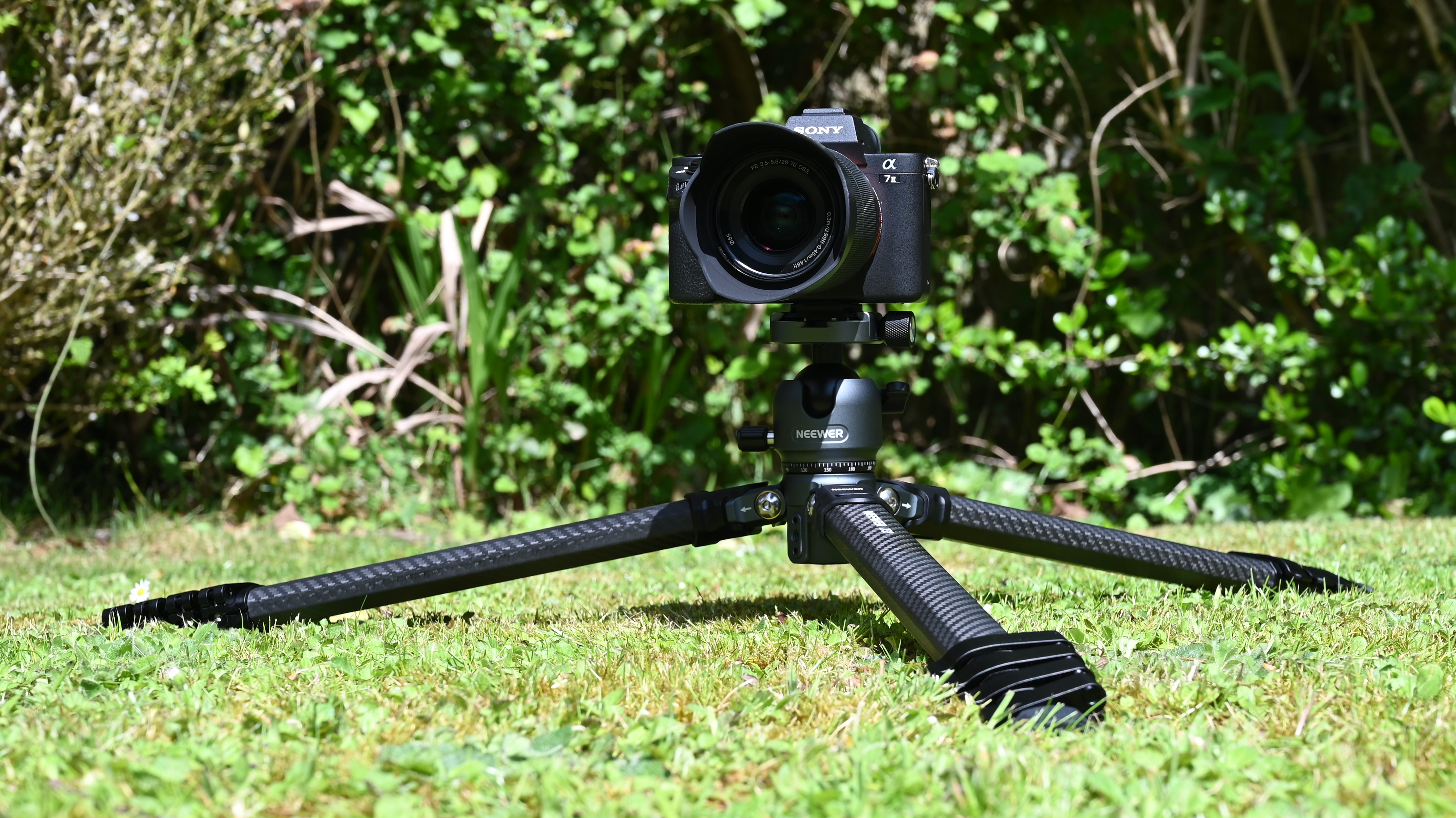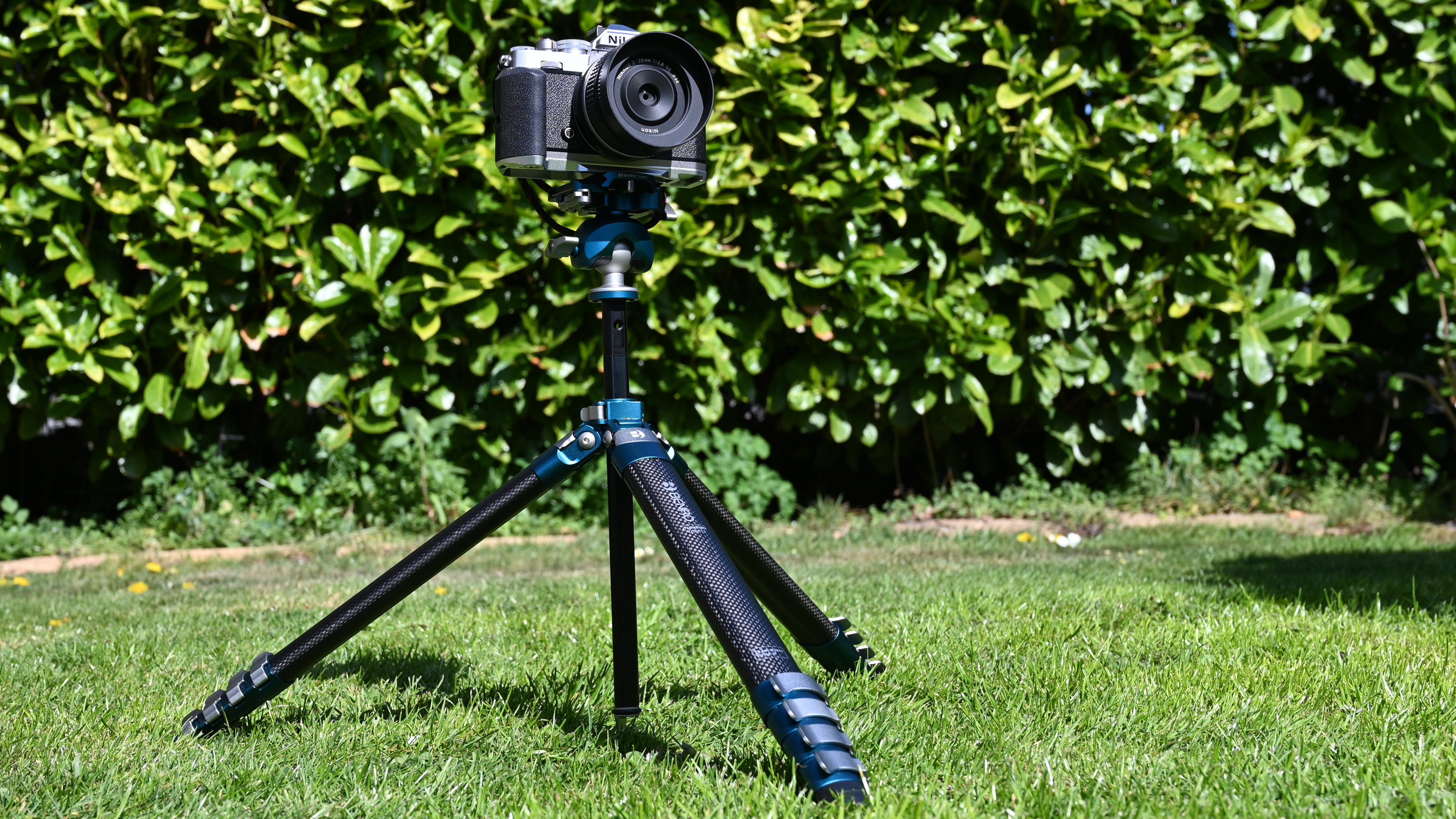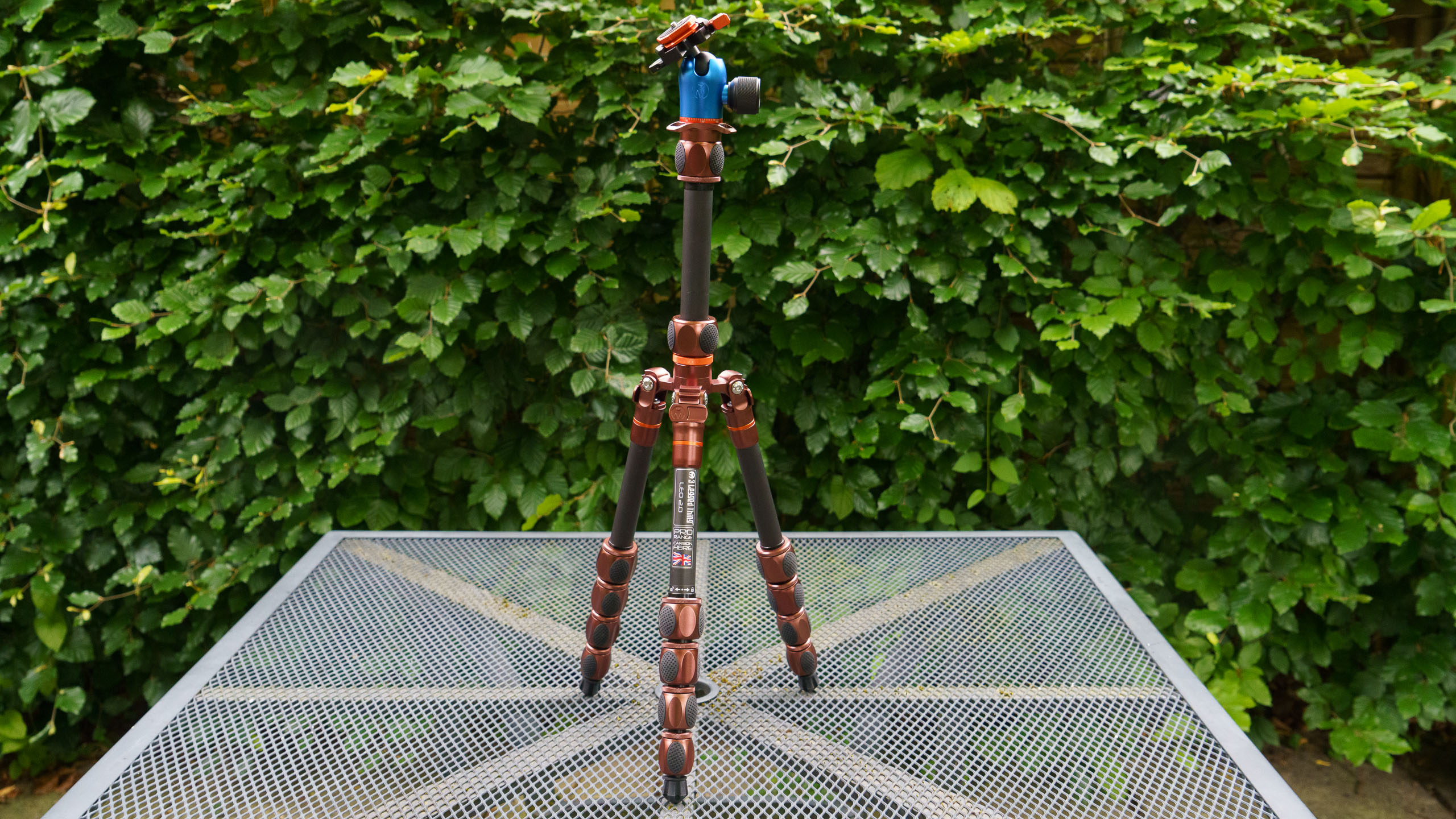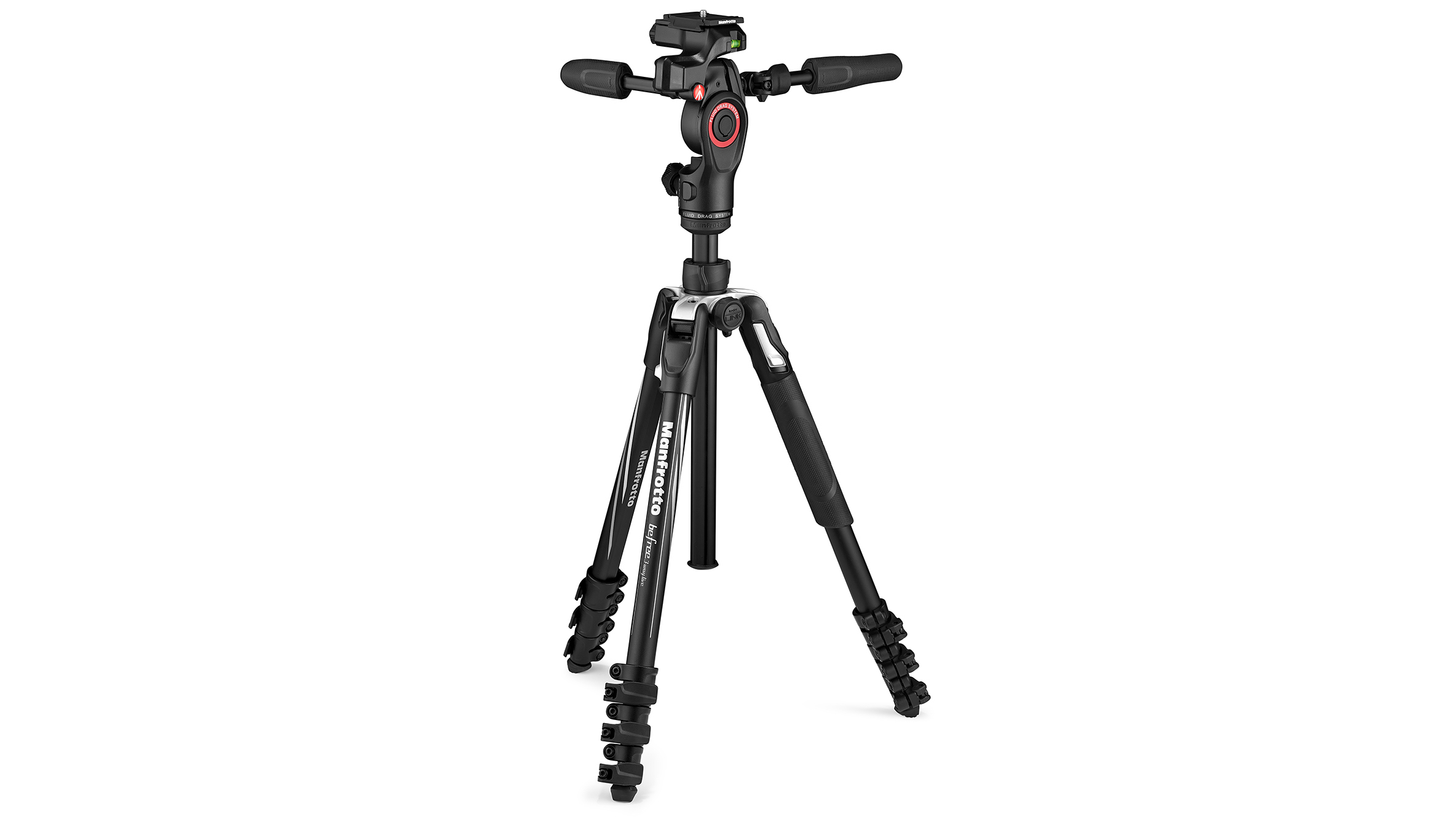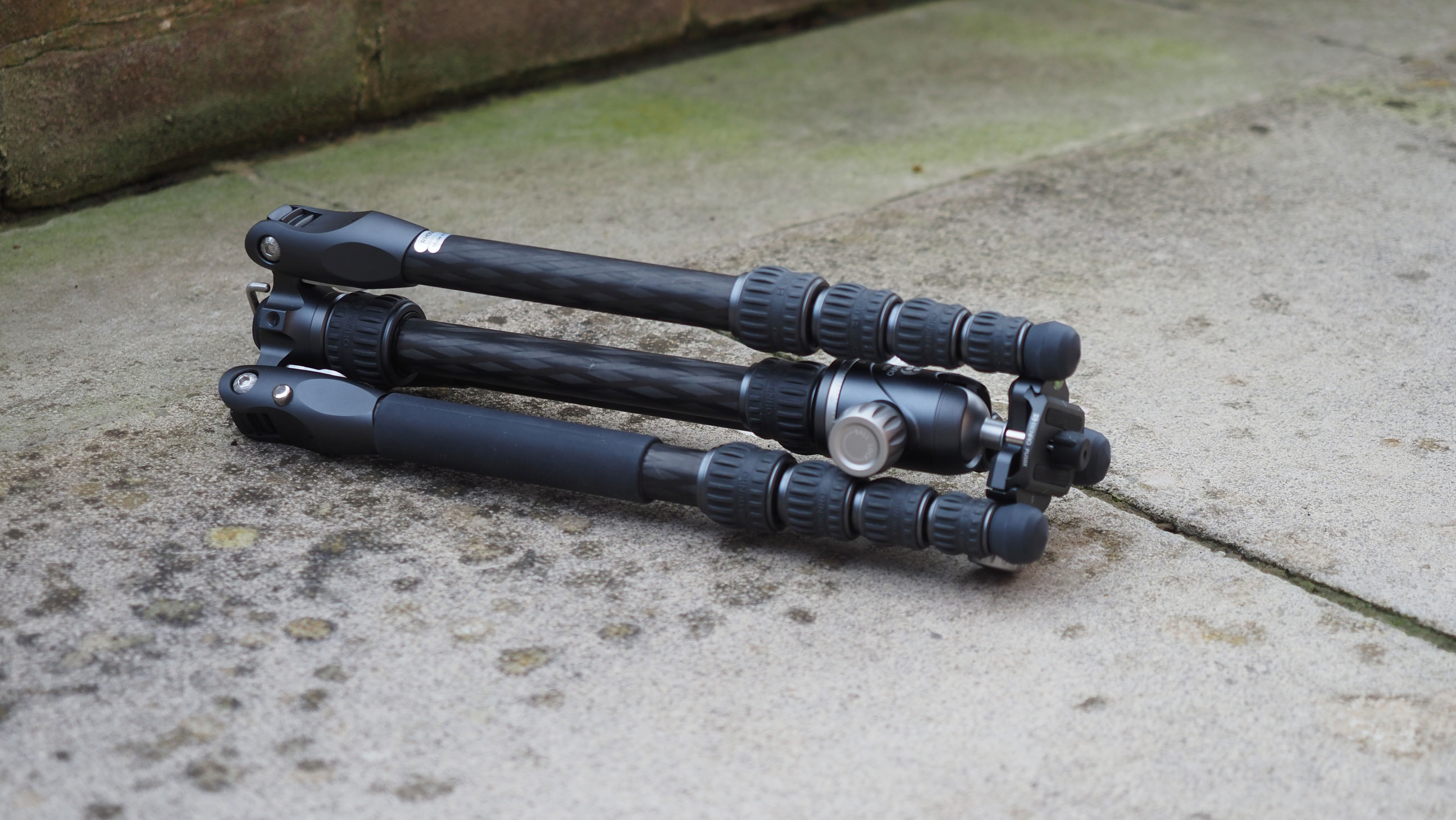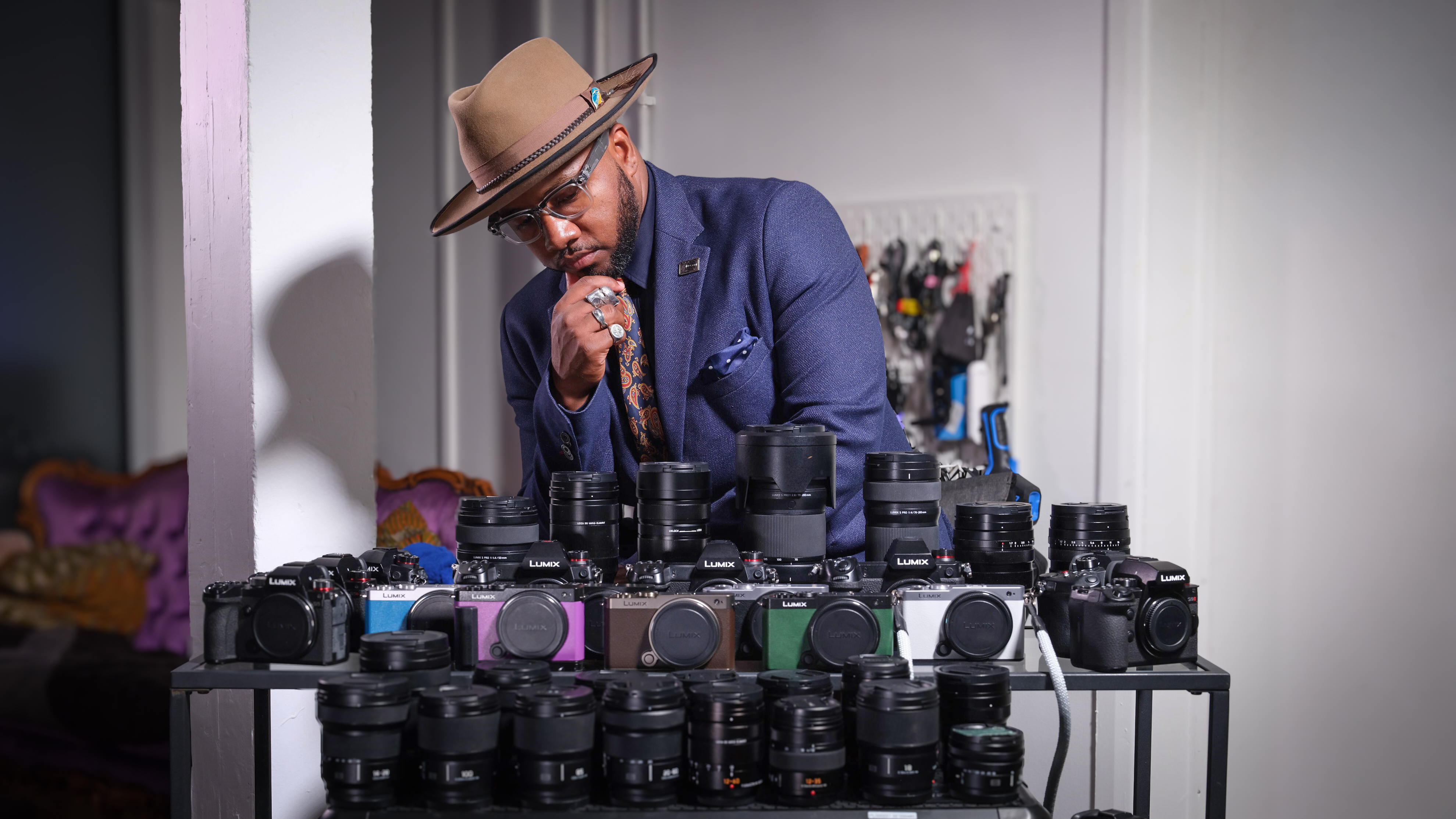The best travel tripod in 2025: lightweight, stable supports for taking on the road
The best travel tripods have to be small enough to pack, light enough to carry, and sturdy enough for shake-free photos!

I like to travel light, whether I’m walking city streets, trekking across the countryside, or jetting off to the other side of the world. Conventional full-sized tripods tend to be big, heavy, and unwieldy – so I often leave mine at home, making it completely useless. By contrast, the best travel tripods literally take a load off. They’re made to be compact and lightweight, but in the past, they’ve often been notorious for being flimsy, relatively unstable, and too small to offer a useful operating height. The new breed of travel tripod tempts me with the promise of giving me the best of both worlds.
Many modern travel tripods have legs that swing upwards for storage, so that the head is encircled by the feet. This typically reduces the folded height by as much as 4in / 10cm. Some also include as many as five sections in each leg, and a two-section extending center column, reducing the folded height even further, while still enabling reasonably lofty shooting. I find they take longer to set up and fold away, but it’s a trade I’m willing to make for smaller stowage.
These are the best of the best travel tripods, but if you're on a limited budget, you might also want to check out our guide to the best budget tripods, many of which are also travel tripods. I've linked each mini-review to our full reviews so you can get even more in-depth info on the models you're most interested in.

Matthew Richards is a photographer and journalist who has spent years using and reviewing all manner of photo gear. He has tested oodles of tripods during his career and there is no one better to help you pick the perfect travel tripod for you.
The Quick List
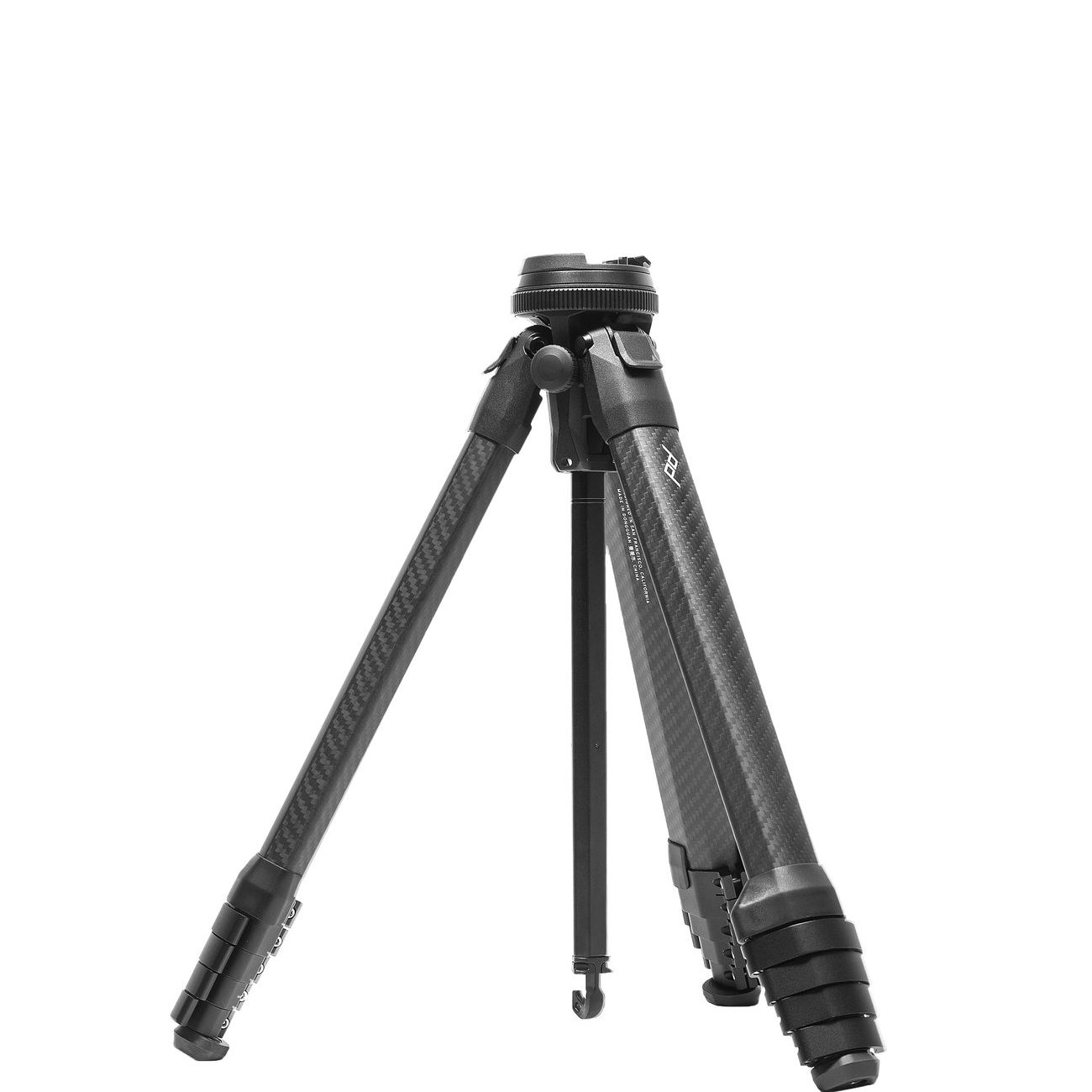
It's the first tripod Peak Design has ever made, but it's the best travel tripod I've ever seen! It's available in carbon fiber and aluminum versions (the latter is a massive 40% cheaper) with the same design features.
Read more below
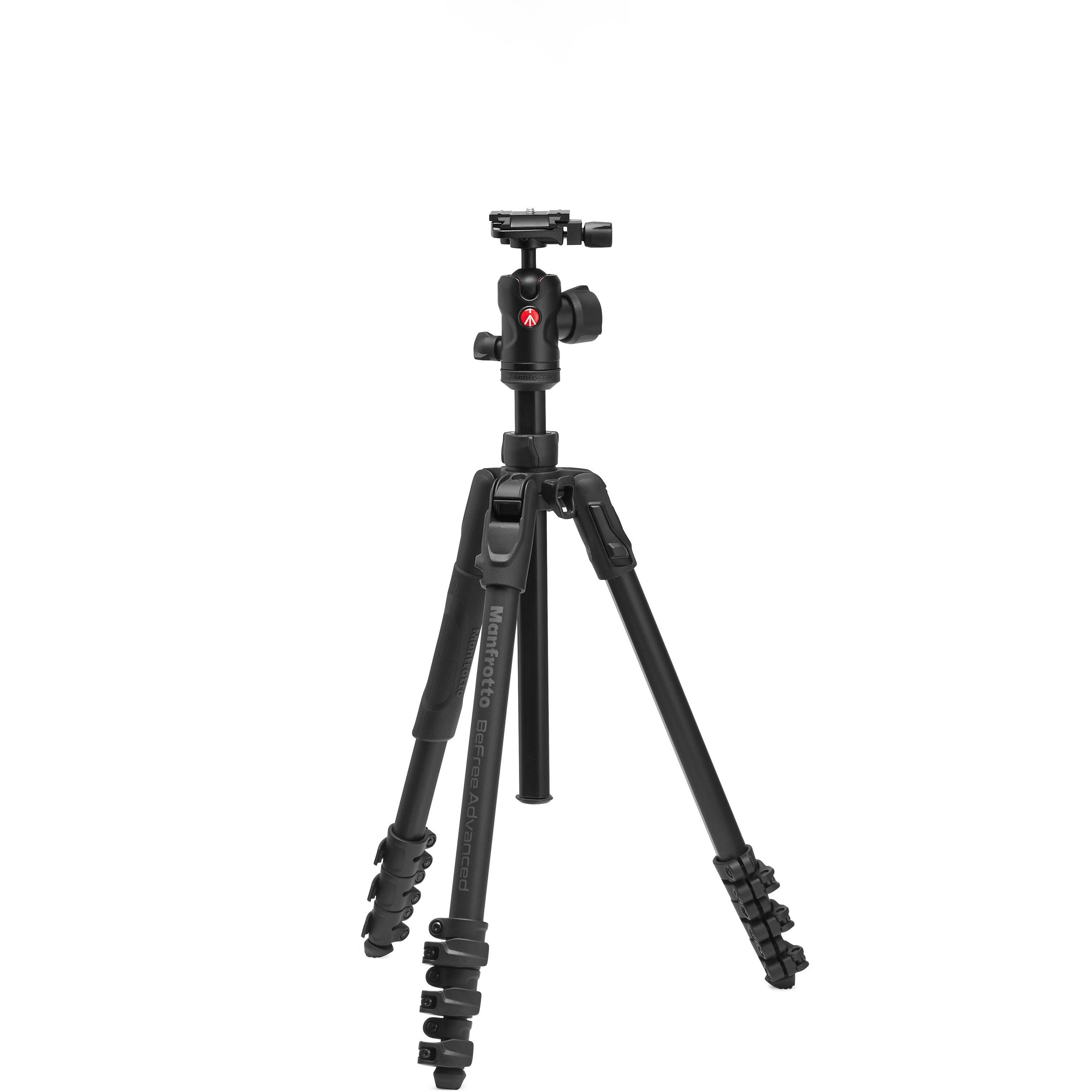
Whether you're shooting stills or video, the Befree Advanced AS is a great travel tripod. Two versions are available: one with twist clamps for the leg sections, and another with lever locks. The included ball head is also a pleasure to use.
Read more below
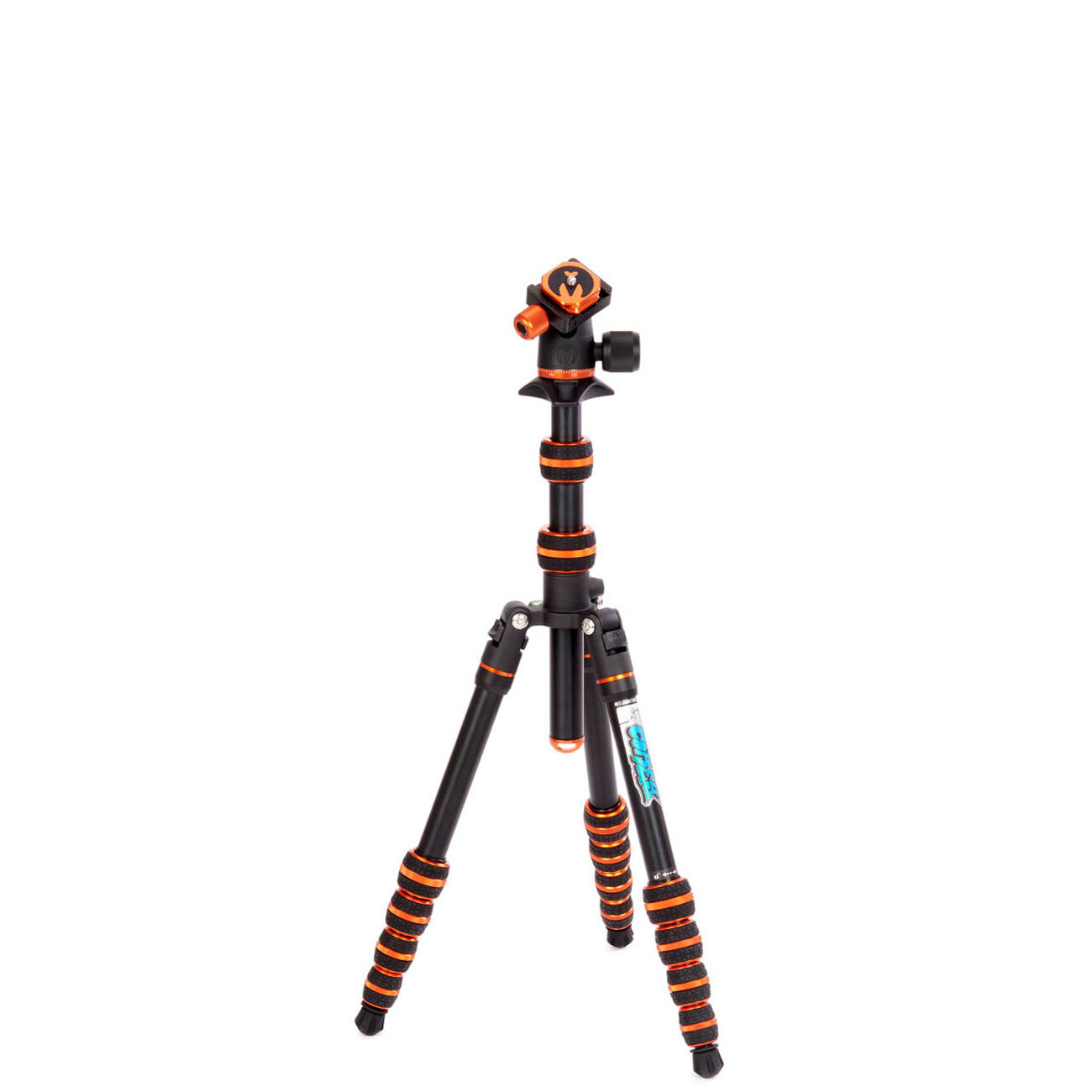
I often love the creative potential of shooting at really low level and the Corey 2.0 gives me all the flexibility I need to make dramatic shots without the fuss. It’s not a carbon fiber tripod but made from top-notch magnesium alloy.
Read more below

With an innovative system that locks and unlocks each leg with a single twist, a plate that doubles as a phone mount, a sub-1kg build, and even an Apple AirTag compartment, this is one feature-packed travel tripod.
Read more below
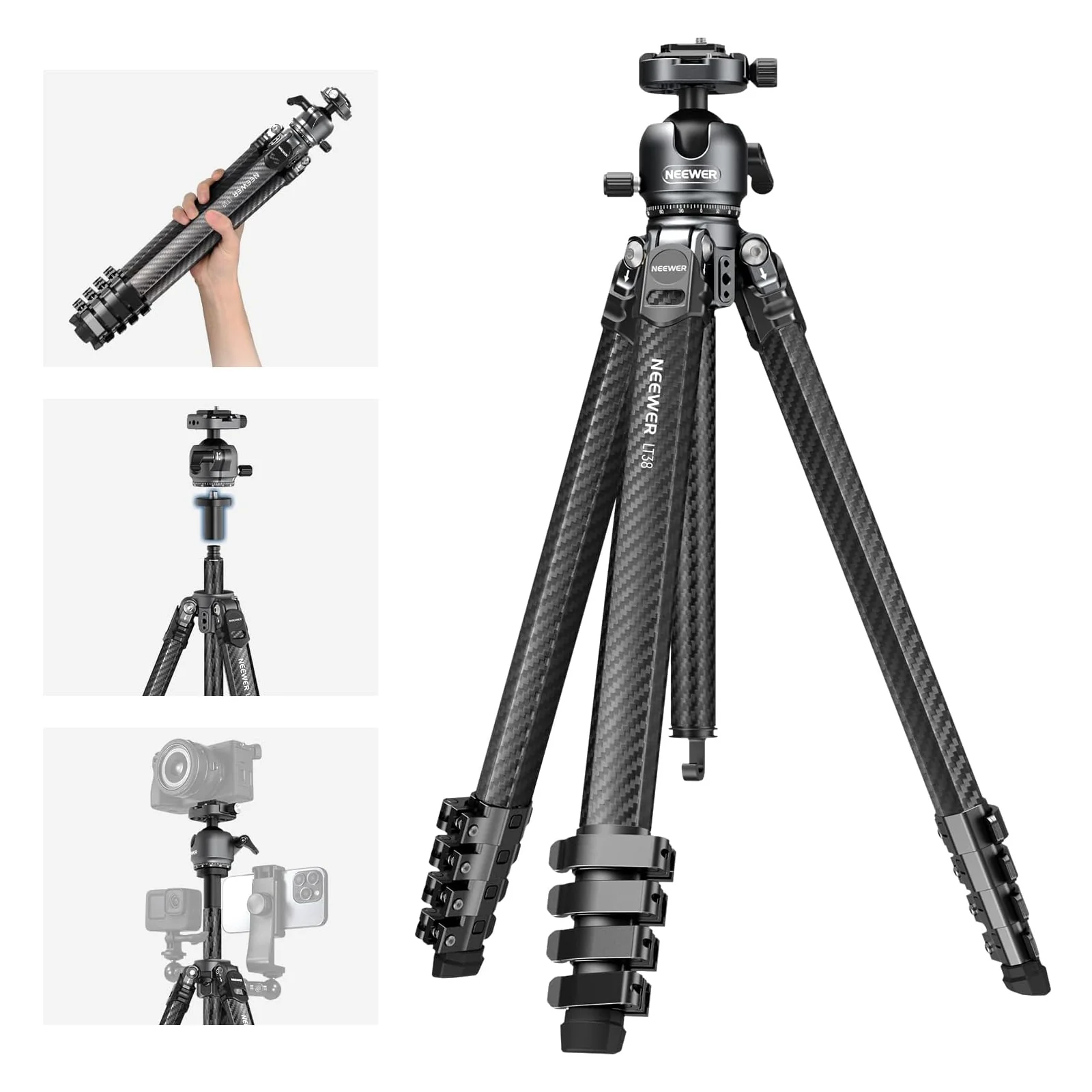
Extending to a towering 155cm gives this carbon fiber tripod a loftier reach than most, but what makes it even more impressive is that it can also shrink all the way down to 15cm for low-level shooting.
Read more below
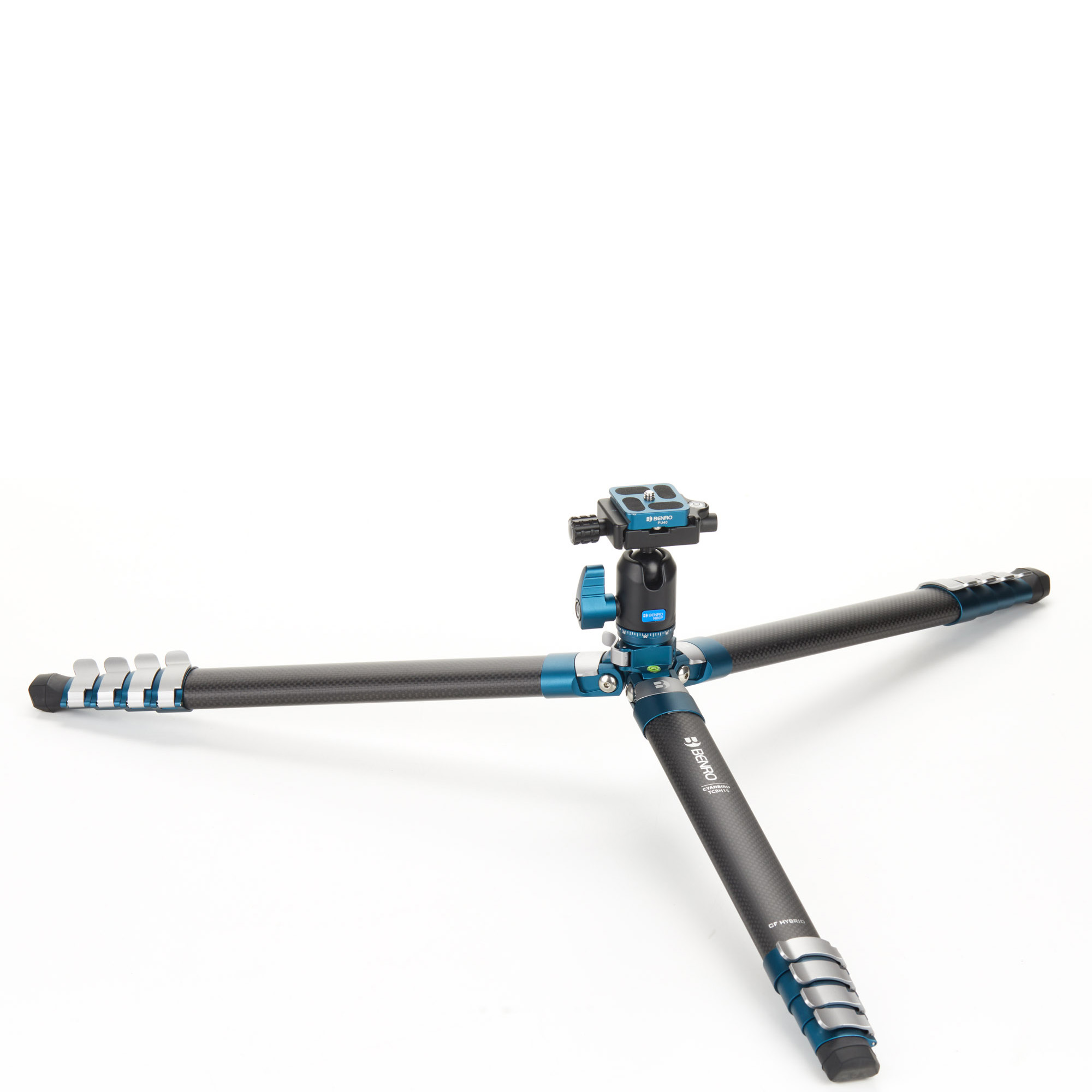
This carbon tripod's oval-shaped legs and triangular center column allow for compact stowage, while the head puts the panning control on top, for simple leveling.
Read more below
Load the next products ↴
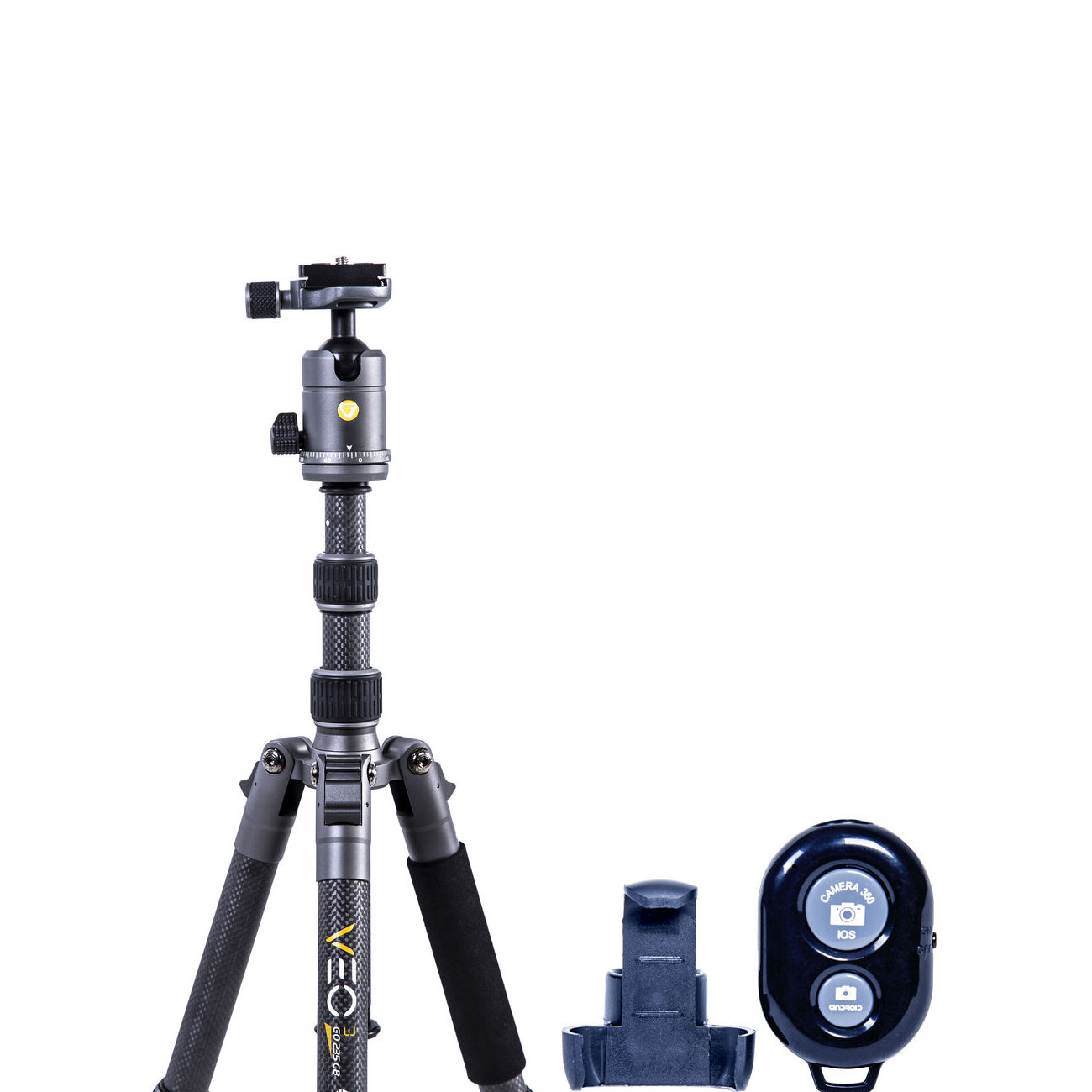
I like that this is one of the outright lightest travel tripods on the market but still packs plenty of useful features. It’s equally adept for taking selfies as much as for shooting landscapes and the like, making it right up my street.
Read more below
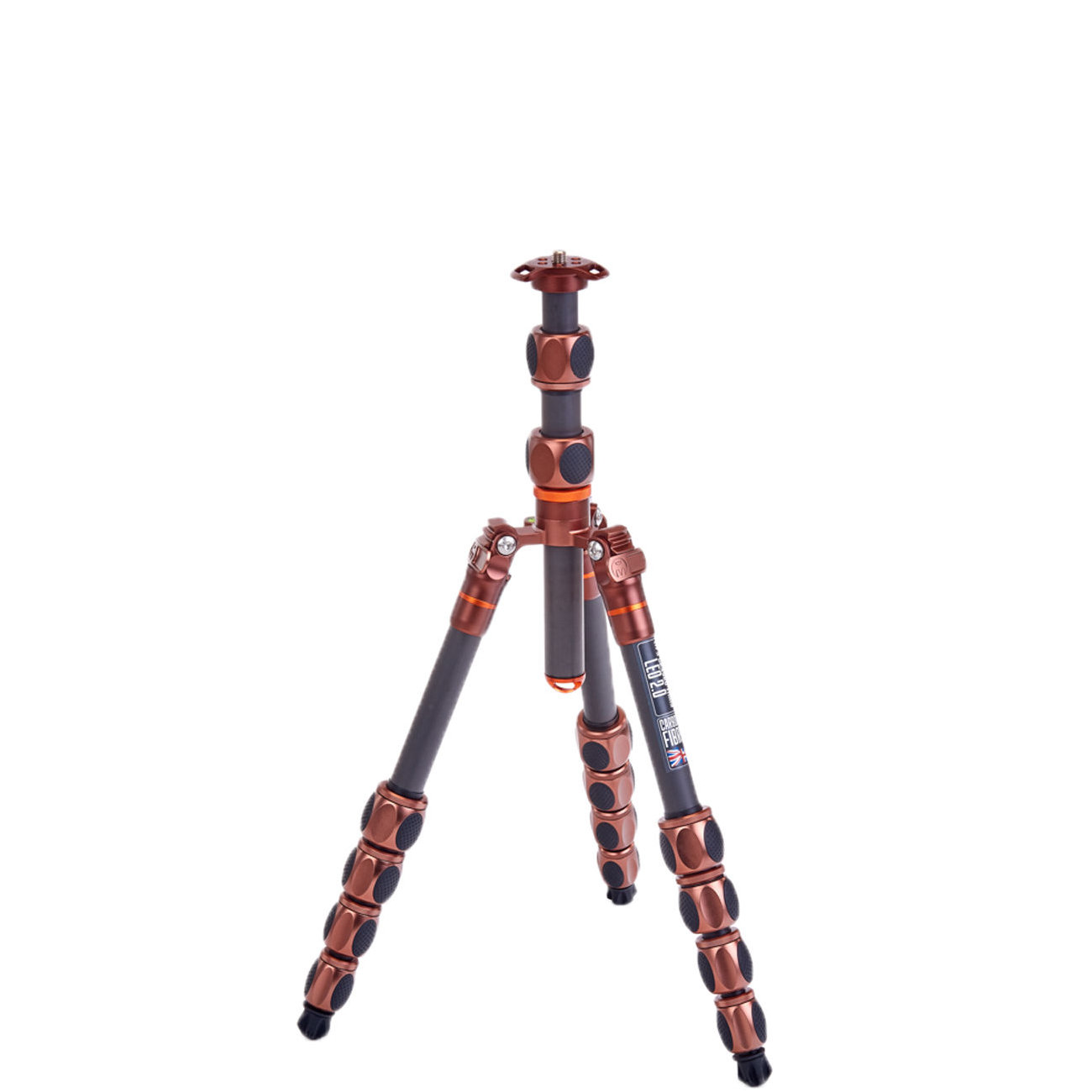
This is no ordinary tripod; it folds down to just 35cm, opens to a height of 146cm, and has a huge 30kg payload. I like that its detachable monopod leg can be used as a mic or camera boom, and it has a Tri-Mount system for adding accessories.
Read more below
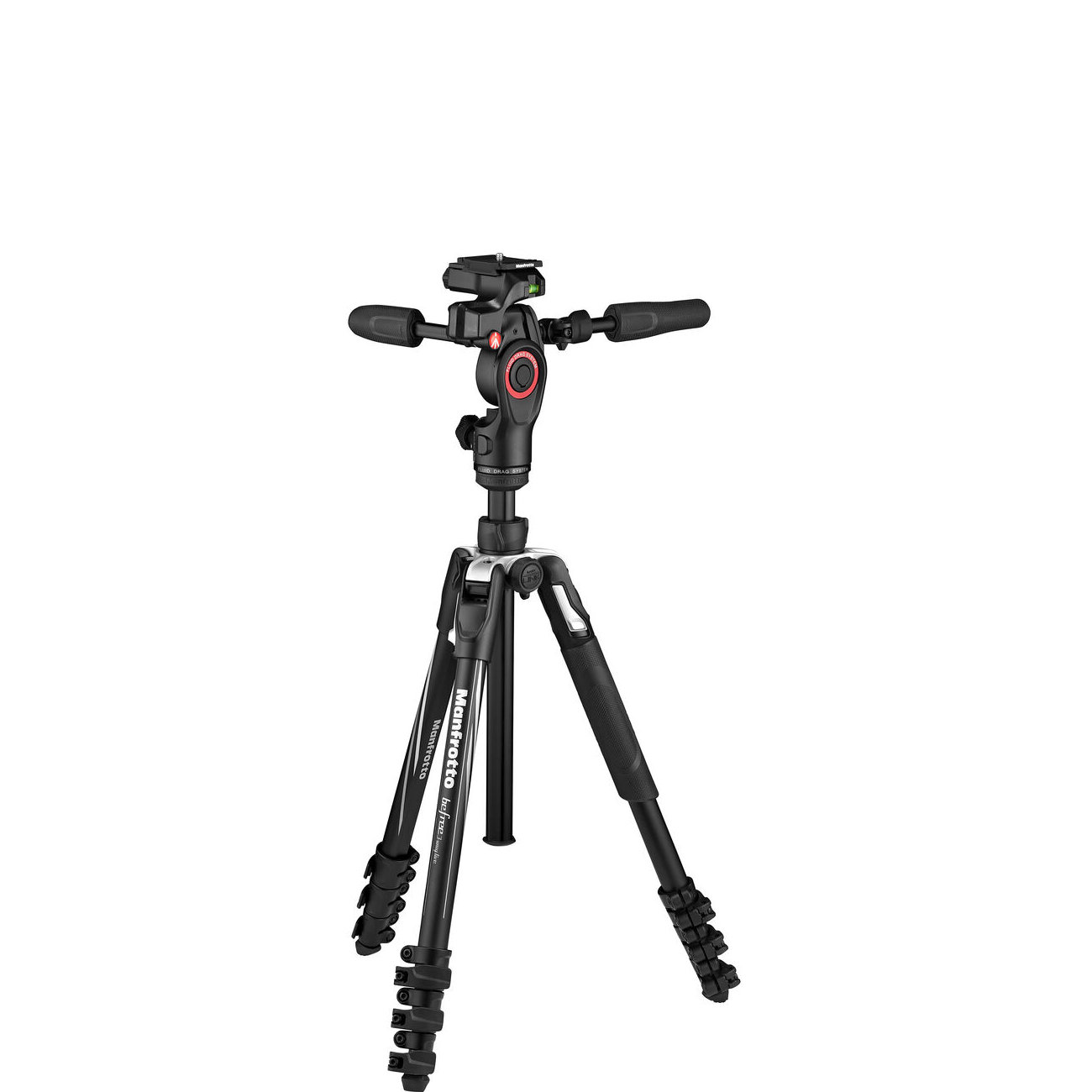
Ball heads are all the rage but there are times when I prefer a 3-way head for making precision adjustments. This Manfrotto kit obliges by bucking the trend, and I find it’s well suited to shooting video as well as stills.
Read more below

I generally prefer carbon fiber tripods to metal ones, for a saving in weight and enhanced resistance to vibration. I’m not so keen that I often have to pay a whole lot more for the privilege but the Rhino is great value for money.
Read more below
My recommendations of the best travel tripods
Why you can trust Digital Camera World
Best tripod overall
Specifications
Reasons to buy
Reasons to avoid
✅ You like innovative design and photographic kit that makes a real statement.
✅ You want a travel tripod that has the slimmest possible profile, thanks to specially shaped legs.
✅ You don’t mind paying top-dollar for a travel tripod, and can make use of all the features.
❌ You don’t want to pay over the odds for an aluminum or carbon fiber travel tripod – there’s no denying it’s pricey.
❌ You don’t need a mobile phone mount, which is a bit fiddly to get at.
❌ You’d rather have a different type of head, although an adapter is available separately.
The Peak Design Travel Tripod may be the first tripod that Peak Design has made, but it's hands-down one of the best travel tripods that I've ever used! While I tried the carbon fiber model, there is an aluminum version that has all the same design features, with a little more weight and less vibration resistance, but is a massive 40% cheaper. A couple of the other tripods here will go higher, but the Peak Design will still go to eye level for an average-height person, and it packs down to just 39cm in length.
I like that it's designed to cut out the dead space between the legs and the column when packed, which means it's not just short when folded but very slim too – I can put this inside my camera bag or cabin bag instead of just strapping it to the outside. The low-profile ball head is simple but brilliant there's a phone holder hidden inside the center column, and best of all for me, the tripod feels seriously rigid.
Read more: Peak Design Travel Tripod review
Features | There are plenty of smart features, including a stash-away phone mount. | ★★★★★ |
Design | Just when I thought all travel tripods were very similar, this one is truly innovative. | ★★★★★ |
Performance | Although compact and lightweight, rigidity is very good, even at full stretch. | ★★★★★ |
Value | The aluminum version is pricey for a metal tripod and the carbon one costs much more. | ★★★★ |
Best for versatility
Specifications
Reasons to buy
Reasons to avoid
✅ You want a complete travel tripod kit that comes with a high-performance ball head and gives solid support.
✅ You like using a ball head that has the added attractions of adjustable friction damping and a panning lock.
❌ You’d prefer a tripod that folds down even smaller, and don’t mind the chore of setting up extra leg sections and an extending center column.
❌ You’d rather have a 3-way head than a ball head, which is arguably more ideal for shooting video.
The Manfrotto Befree Advanced AS is a great travel tripod compromise: it’s sturdy but lightweight, folds down nice and small, and the clever head takes just about anything I can throw at it.
The included Befree Advanced 494 Center Ball Head is super quick and easy to work with, but fully featured, with independent adjustments for the main ball lock/release, plus an adjustable friction damper and a panning lock. Below the head is Manfrotto’s ‘Easy Link’ socket, which is ideal for mounting an LED video lamp, microphone, or other accessories.
You can have the Manfrotto Befree Advanced AS is an aluminum or carbon construction, but I reckon the aluminum option is the best value. It still weighs just 1.51kg / 3.3lb, making the complete kit impressively lightweight for an aluminum setup. What's more, you can also have this tripod with either twist clamps for the leg sections or lever locks, depending on your personal preference. The 9kg load capacity is also generous, and despite the tripod's low weight, it still feels reasonably sturdy, even at its full 150cm stretch.
Read more: Manfrotto Befree Advanced AS review
Features | The legs and head are both feature-rich but there’s no monopod conversion facility. | ★★★★ |
Design | Manfrotto knows a thing or two about tripod design, amply demonstrated in this kit. | ★★★★★ |
Performance | Rigidity and overall performance are excellent for a lightweight set of legs and ball head. | ★★★★★ |
Value | Considering the quality and versatility of the ball head as well as the legs, it’s great value. | ★★★★★ |
Best alloy tripod
Specifications
Reasons to buy
Reasons to avoid
✅ You’re happy with a magnesium alloy rather than carbon fiber travel tripod.
✅ You want great performance and versatility at a bargain price.
✅ You like the ability to shoot creatively from really low levels.
❌ You’d rather spend more on a carbon fiber tripod that’s not cold to the touch.
❌ You’d rather have something simpler, with less leg and column clamps to operate.
❌ You don’t need the 14kg payload because you’re using lightweight kit.
I find that all of the Punks tripods from 3 Legged Thing are very travel-friendly, but the Corey 2.0 is the smallest and easiest to pack for the journey. It has the usual swing-up legs to save stowage space, this time with five sections in each, plus a two-section head, enabling a decent maximum operating height but a very small stowage size.
Don’t be put off that this one’s not a carbon fiber tripod. It’s actually made from aerospace-grade magnesium alloy, and the upshot is that it’s still lightweight yet very strong, with a hefty 14kg maximum load rating.
It ticks another two boxes on my wish list by easily converting to a monopod and enabling ultra-low-level shooting, with the option of attaching the ball head directly to the canopy (leaving the center column out of the equation). All three legs are removable, and Vanz footwear (sold separately) transforms the Corey 2.0 into a stylish tabletop tripod.
Read more: 3 Legged Thing Punks Corey 2.0 review
Features | The excellent feature set can be further extended with optional extra accessories. | ★★★★★ |
Design | The design is first-rate, both for the legs and for the complete kit with ball head. | ★★★★★ |
Performance | Performance is excellent in all respects, with excellent resistance to flexing. | ★★★★★ |
Value | Based on high-grade magnesium alloy rather than carbon, it’s keenly priced. | ★★★★★ |
Best tripod for features
Specifications
Reasons to buy
Reasons to avoid
✅ Incredibly light (0.9kg / 2 lbs) and reasonably compact (folds to 42.8cm), it's effortless to carry all day in a backpack.
✅ An innovative quick-release plate doubles as a phone holder, allowing you to switch between pro camera gear and mobile content creation.
✅ One leg can be detached to function as a standalone monopod, providing a flexible solution for tight spaces or fast-moving subjects.
❌ At roughly $300, it is significantly more expensive than entry-level travel tripods, which might deter casual hobbyists.
❌ Twist locks take some getting used to, and the ball head has multiple levers that can initially be confusing to distinguish.
❌ While sturdy for travel, it is not designed to support the extremely heavy gear required for dedicated professional wildlife photography.
Built from carbon fiber and aluminum alloy, the Freewell FW-T1 supports everything from smartphones to medium-format cameras while remaining exceptionally lightweight. Its standout feature is versatility; the quick-release plate cleverly doubles as a phone holder when flipped, allowing creators to switch seamlessly between professional photography and social media content.
One leg can be detached to convert into a monopod, offering flexibility for fast-paced shooting. The tripod also includes a 360° ball head that supports portrait orientation without needing an L-bracket, accessory expansion holes, and a hidden compartment for an AirTag.
The twist-lock legs allow for quick setup with three flexible angle positions (20°, 55°, and 75°), making it adaptable to uneven terrain. The ball head is smooth and precise, though the multiple levers can initially be confusing. While it sits in a mid-range price bracket, the professional build quality and thoughtful engineering make it excellent value for money.
Read more: Freewell FW-T1 review
Features | The ball head offered a lot of variety in panning and tilt, and the option to turn a leg into a monopod is useful. | ★★★★★ |
Design | This is a beautifully lightweight, compact, and highly versatile tripod! | ★★★★★ |
Performance | It did everything I needed to in the field and while recording at home. | ★★★★★ |
Value | The initial shock of the price wore off as soon as I started using it, and it offers good value for a carbon fiber tripod. | ★★★★ |
Best for height range
Specifications
Reasons to buy
Reasons to avoid
✅ You want to shoot really tall, at up to a towering 155cm.
✅ You want to get down as low as 15cm for low-level shooting.
✅ You want a robust carbon fiber build that can support 10kg.
❌ You want spiked feet, as well as rubber pads, for greater stability on soft ground.
❌ You're on a tight-budget as this is a mid-priced set of legs.
❌ You'd prefer fewer leg clamps to deal with; there are 12 to contend with here.
The Neewer LiteTrip LT38 travel tripod is constructed from high-quality carbon fiber, but rather than traditional circular tubes, the legs have a flattened profile for compact stowage. It features five-section legs and a two-section center column, and offers three locking leg angles, which enable a really versatile range for shooting up high and down low, with a maximum operating height of 155cm and a minimum operating height of 15cm.
Some five-section tripods are a bit on the flimsy side, but not so the LiteTrip LT38, which boasts a substantial 10kg load capacity and effectively minimizes vibrations and unwanted flexing. What's more, the 12 leg-locking levers are quick and easy to operate, enabling quick setup times. All in all, this Neewer tripod makes for an excellent choice, combining a high-end carbon fiber build with a robust and adaptable ball head, delivering outstanding performance.
Read more: Neewer LiteTrip LT38 review
Features | The 5-section legs, quick-action setup, shaped leg sections, splittable center-column and smart ball head are all excellent. | ★★★★★ |
Design | The design really gels, enabling ultra-low-level shooting as well as enabling a generous maximum operating height, at least for a travel tripod. | ★★★★★ |
Performance | Unlike many lightweight travel tripods, the Neewer is reassuringly robust, stands firm even at its tallest operating height and is very resistant to vibrations. | ★★★★★ |
Value | It’s toward the more expensive end of the scale for a travel tripod but, considering the quality and performance, it’s very good value. | ★★★★ |
Best design
Specifications
Reasons to buy
Reasons to avoid
✅ You want clever design touches, such as oval-shaped legs to minimize stowed size.
✅ You want a perfectly level shooting platform for panning with minimum setup time.
✅ You want to travel really light, as this weighs less than a kilo.
❌ You'd prefer to save cash with the cheaper hybrid carbon and aluminum version.
❌ You’ve got a heavy camera and lens combo; this maxes out at 4.5kg.
❌ You want metal spikes for prodding into soft ground, not just rubber pads.
The Benro Cyanbird Carbon Tripod comes as a kit with Benro's FS30 Head, and the pair makes for a great combination that stands out for its innovative design and performance. Unlike many typical travel tripod designs, this forgoes swing-up legs, thus allowing for quicker setup and breakdown, but rather than being completely circular in shape, the legs are made of oval, curved leg sections that wrap around a triangular center column, minimizing its stowed size to a still-very-compact 45.5cm. The supplied FS30 ball head offers similarly innovative design solutions, with the panning section located at the top of the head rather than the base, which makes leveling the tripod for panning particularly easy.
Despite its lightweight construction – tipping the scales at a shade under a kilogram – it offers impressive rigidity and stability, offering solid support for loads up to 4.5kg, even at its maximum height of 150cm, effectively resisting vibrations and ensuring stable shots. While this carbon tripod is priced higher than the hybrid version (which combines carbon fiber and aluminum), its clever design and attention to detail justify the cost, and it's a worthwhile investment for photographers and videographers seeking a compact, lightweight, and high-performing travel tripod.
Read more: Benro Cyanbird Carbon Tripod + FS30 head kit review
Features | The legs and head of this tripod kit are both packed with clever features that are well implemented. | ★★★★★ |
Design | Bucking the trend of swing-up legs for travel tripods, it’s a smart design that makes for quick and easy use. | ★★★★★ |
Performance | Despite being compact and lightweight, the tripod is very rigid, stable and resistant to vibration. | ★★★★★ |
Value | The fully carbon fiber kit is rather pricier than the ‘hybrid’ carbon and aluminum version, but that’s to be expected. | ★★★★ |
Best lightweight tripod
Specifications
Reasons to buy
Reasons to avoid
✅ You want a tripod that includes a smartphone adapter and even a Bluetooth controller.
✅ You’d like a tripod that works as a monopod and selfie stick as well.
✅ You want one of the absolute lightest travel tripods on the market.
❌ You want a heftier maximum load rating than 4kg.
❌ You’d rather have a taller maximum operating height than 136cm.
❌ You don’t feel the need for a low level adapter or dual rubber pad and spiked feet.
With five sections in each swing-up leg and a two-section center column, this Vanguard folds down to just over a foot long yet gives a reasonable maximum operating height. I find it can easily fit into my daily bag or backpack. It’s also very lightweight, although, as expected, the alternative aluminum version is a little heavier. The bottom leg sections are quite spindly, with a diameter of just 11mm, but stability is pretty good even at full stretch.
As well as giving a typically quick and easy change to monopod configuration, the Vanguard is more unusual in coming complete with a smartphone adapter. I like that it works well as a monopod and even a selfie stick, so I only need to take one support for the journey rather than two or three.
Read more: Vanguard VEO 3GO 235CB review
Features | The feature set extends to an included Bluetooth remote for your smartphone. | ★★★★★ |
Design | Some clever design work has gone into this Vanguard tripod, from top to bottom. | ★★★★★ |
Performance | The trade-off for being such a lightweight tripod is that it’s not massively rigid. | ★★★★ |
Value | Considering the feature set and carbon fiber build, it’s great value at the price. | ★★★★★ |
Best for sturdiness
Specifications
Reasons to buy
Reasons to avoid
✅ You've got a seriously weighty camera setup.
✅ You want a tripod that folds down extremely small.
✅ You like the idea of a detachable monopod and boom arm.
❌ You want to choose your own head, although you can buy the legs on their own.
❌ You don’t like fiddling with lots of leg clamps and dual center column clamps.
❌ You’re keeping an eye on the bottom line – it’s a pricey travel tripod.
The 3 Legged Thing Leo 2.0 is no ordinary tripod. It folds down to just 35cm in length but opens out to offer a maximum height of 146cm and a huge payload capacity of 30kg. That far exceeds the weight of any of my camera and lens combinations, but the net result is great rigidity.
I like that it has a detachable monopod leg that can also be used as a microphone or camera boom, a Tri-Mount system for adding accessories, and an innovative two-section center column. That helps it to fold down really small yet reach a decent maximum operating height. You can buy the legs on their own, but I’d get the complete kit with 3 Legged Thing’s new and improved AirHed Pro Lever ball head.
The Leo 2 is not the lightest travel tripod you can get, and not the cheapest, but its ratio of folded length to maximum height, combined with its all-around versatility, makes it one of the best.
Read more: 3 Legged Thing Leo 2.0 + AirHead Pro Review
Features | It’s certainly a feature-rich carbon fiber tripod that ticks all the right boxes. | ★★★★★ |
Design | There are plenty of clever design flourishes, typical of 3 Legged Thing. | ★★★★★ |
Performance | The rigidity and resistance to vibration is exceptional for a travel tripod. | ★★★★★ |
Value | It’s expensive but only about half the price of the Peak Design carbon travel tripod. | ★★★★ |
Best with 3-way head
Specifications
Reasons to buy
Reasons to avoid
✅ You like the idea of a hybrid travel tripod, with a head that works well for video as well as stills.
✅ You feel reassured by buying a tripod from one of the biggest names in the business.
✅ You like flip locks rather than the more usual twist locks for leg clamps.
❌ You’d rather have a tripod kit that has a more usual ball head.
❌ You don’t shoot video, but stick to stills.
❌ You’d prefer a carbon fiber travel tripod rather than an aluminum one.
The Manfrotto Befree 3-Way Live Advanced is a lightweight photographer’s travel tripod paired with a three-way head. Although ball heads have become hugely popular, I actually prefer a 3-way head for the likes of architectural and close-up shooting, where precise adjustments can be critical. The 3-way fluid head in this case uses a hydraulic damping system to make it easy for smooth, fluid camera movements, so I find it also works well for shooting video.
The tripod, meanwhile, provides a good balance between capacity, weight, and price. It’ll take 6kg of kit and only weighs 2kg itself. I’ve tested lighter and stronger tripods, but they tended to be more pricey than this one.
It’s not as tall as some of the other tripods in this guide, and doesn’t fold down particularly small, the latter not helped by having a 3-way rather than ball head. But, for the vast majority of purposes, this is an impressive all-around package and merits serious consideration for any traveling photographer or videographer.
Read more: Manfrotto Befree 3-Way Live Advanced tripod review
Features | There’s a seriously good feature set, led by the dual-purpose 3-way head. | ★★★★★ |
Design | The design covers all the basics but lacks some of the clever flourishes I’ve seen elsewhere. | ★★★★ |
Performance | The load rating of 6kg isn’t massive but performance is good with impressive rigidity. | ★★★★★ |
Value | It’s pretty expensive for an aluminum travel tripod but still pretty good value. | ★★★★ |
Best compact tripod
Specifications
Reasons to buy
Reasons to avoid
✅ You want a really small, lightweight tripod that still has a hefty 10kg load rating.
✅ You’re after a carbon fiber tripod that’s reasonably priced.
✅ You can make use of the secondary pan axis for shooting panoramas and video.
❌ You'd like to shoot higher than 141cm when in monopod configuration.
❌ You’d like a travel tripod with a quick setup time.
❌ You’d prefer a tripod with feet that have metal spikes as well as rubber pads.
A plus point for me when space is at a premium is that the Benro Rhino 05C VX20 (also called the Rhino Zero Series VX20) is the smallest in a group of four recently launched Rhino travel tripods. Compactness doesn’t equate to flimsiness, though, and I’ve found that it’s remarkably rigid and robust for such a compact tripod. Another nice touch is that Benro’s companion VX ball heads have a secondary pan axis just under the camera plate. It’s great for taking sequences of panned shots to stitch into a panorama, and shooting video, as the panning axis remains on the level without the need to meticulously level the legs as well as the head.
I find that travel tripods have limitations, including a lower maximum working height and longer ‘unfolding’ time, but this goes with the territory, and I can’t criticize the Rhino for that. Sure enough, this Benro doesn't extend to a particularly tall height, and outright rigidity can feel a little compromised if I fully extend all of the leg sections and both of the center column sections. When it’s not at full stretch, though, I find this Benro is as rigid as much bigger and heavier tripods.
Read more: Benro Rhino 05C VX20 review
Features | There’s a lot to like about the enhanced feature set of both the legs and head. | ★★★★★ |
Design | The design incorporates some clever touches that add versatility. | ★★★★★ |
Performance | It’s good overall but rigidity could be better at the maximum operating height. | ★★★★ |
Value | It’s very good value for money in some world regions, less so in others. | ★★★★ |
How to choose the best travel tripod
It’s good to be choosy when picking your perfect travel tripod for your needs and budget. Here are a few things to bear in mind…
Carbon fiber is pricier than aluminum, but is it worth the extra?
Up-market tripods are usually made from carbon fiber instead of aluminum. They have a more luxurious feel, a smarter looking finish, and can be slightly more resistant to vibrations. Carbon fiber can also feel less cold to the touch. But the main advantage of carbon fiber is that it’s more lightweight than aluminum, giving it a clear advantage when you’re trying to shed weight. However, there can be diminishing returns. Although the weight-saving can be substantial in full-sized tripods, it’s much less noticeable in relatively small tripods. For many travel tripods that are available in both aluminum and carbon fiber options, the latter typically only saves around 200g in weight, little more than 10 per cent. Considering that the carbon fiber editions are often about 50 per cent more expensive to buy, aluminum travel tripods can be more cost effective.
How small is the tripod when folded?
A decade ago, the Giotto’s company launched a series of Vitruvian tripods, named after Leonardo da Vinci’s drawing, ‘The Vitruvian Man’. As in the drawing, the legs swing upwards but, in the case of the Giotto’s tripods they swung up completely, adopting a vertically upright orientation for stowing away. The trick was that, by fully extending the center column before swinging the legs up, the tripod head no longer extended beyond the length of the legs, making the carrying size much smaller. Many recent travel tripods fold down small enough to fit inside a bag or backpack, rather than needing to be tethered to the outside.
Can I save space by using a tripod as a monopod as well?
A neat trick of many recent travel tripods is that you can unscrew one of the tripod legs, detach the center column, and join the two together for use as a monopod, complete with ball head. That can be a real space saver if you like using a monopod as well as a tripod, as you only have to carry one bit of kit.
What’s so good about multi-angle legs?
Pretty much all travel tripods these days have legs that can be locked at multiple angles to the center column. Typically either two or three alternative angles are available, in addition to the legs being able to swing up vertically. This can help when you’re shooting on uneven terrain, or when there are obstacles in the way. For example, you might need to use one or two legs in a near-horizontal orientation and place the feet on a wall or table to get into your desired shooting position. Another bonus is that, by splaying the legs to a wider angle when shooting at low operating heights, you can increase stability and reduce the risk of the tripod toppling over if knocked.
How low can you go when shooting with a tripod?
Multi-angle legs help to reduce the minimum shooting height but the limiting factor is generally the point at which the center column touches the ground. The minimum height is therefore the height of the center column plus the ball head. A two-section extending center column can help to further reduce the minimum operating height, as well as the carrying height. Some tripods are supplied with a short, stubby ‘low angle adaptor’. You can attach this to the tripod head and use it instead of the center column. The center column is also removable in most tripods, so you can invert it and shoot from between two of the legs with the camera upside down, right down at ground level.
What’s best for feet, pads or spikes?
Rubber pads are the normal footwear for tripods these days. They work well on solid ground as well as on grass and sandy areas. For soft surfaces like carpet, spikes can offer a more assured footing. Some tripods are supplied with both rubber pads and metal spikes, so you can swap between them as needed. Another option that used to be more common in the past is rubber pads on a threaded mount, so you can screw them in to reveal metal spikes beneath.
How we test travel tripods
We measure the maximum operating height of each tripod and its folded height for carrying, complete with head attached. We also measure the combined weight of each set of tripod legs and head, using electronic scales, and measure the diameter of all leg sections, from the widest to the thinnest, using digital calipers.
We check the ease of use, smoothness and precision of all available adjustments in each set of tripod legs and heads. This ranges from adjusting leg sections and pivot facilities (where available), to the locking mechanisms of the head, as well as independent pan and friction damping adjustments, where fitted.
To check overall stability, we shoot with a range of camera bodies fitted with wide-angle, standard, telephoto and macro lenses. We look for good resistance to flexing and vibrations throughout the whole range of operating heights, including the tallest available settings with the legs and center column fully extended.
Find out more about how we test and review on Digital Camera World
Today's prices compared
The best camera deals, reviews, product advice, and unmissable photography news, direct to your inbox!
Matthew Richards is a photographer and journalist who has spent years using and reviewing all manner of photo gear. He is Digital Camera World's principal lens reviewer – and has tested more primes and zooms than most people have had hot dinners!
His expertise with equipment doesn’t end there, though. He is also an encyclopedia when it comes to all manner of cameras, camera holsters and bags, flashguns, tripods and heads, printers, papers and inks, and just about anything imaging-related.
In an earlier life he was a broadcast engineer at the BBC, as well as a former editor of PC Guide.
- Adam WaringGuides Editor
